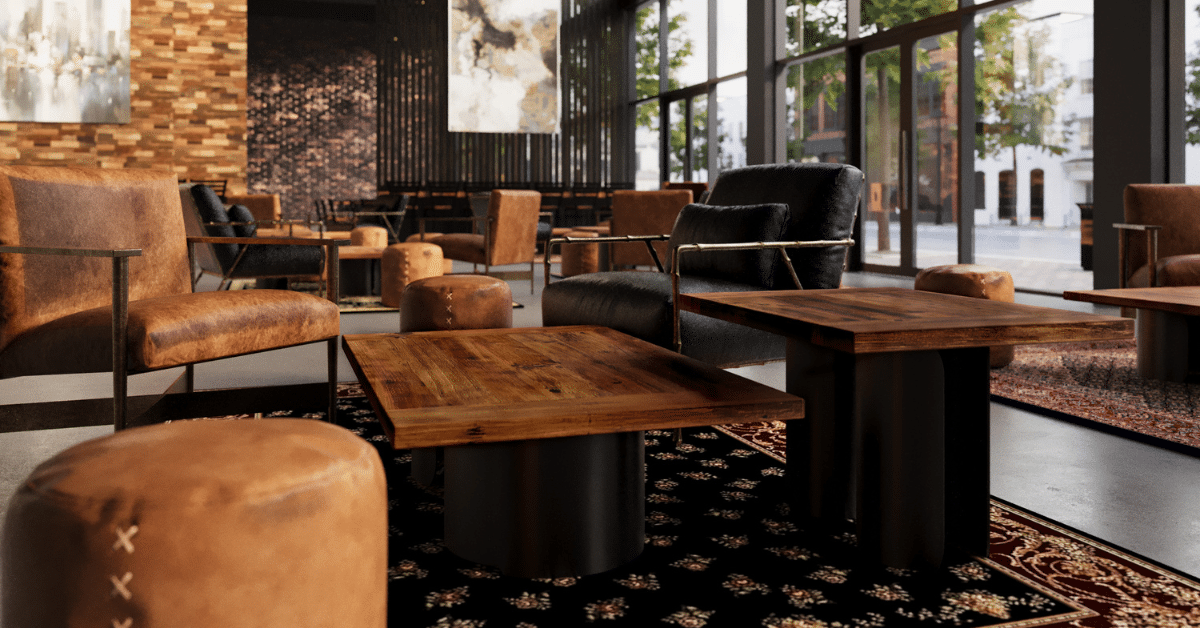Reclaimed Wood: The Sustainable Choice for Home and Commercial Spaces

What is the Appeal of Reclaimed Wood?
Sustainable reclaimed wood is a popular choice for both residential and commercial spaces, offering a sustainable and eco-friendly alternative to new lumber. The inherent character and history of reclaimed wood make it a perfect choice for those looking to create a unique and authentic atmosphere. This article will discuss the environmental benefits, aesthetic appeal, applications, and maintenance of reclaimed wood to help you make an informed decision for your next project.
What are the Enviromental Benefits?
Sustainable reclaimed wood offers numerous environmental benefits:
1. Reduced Deforestation
By utilizing sustainable reclaimed wood, you actively contribute to reducing deforestation and preserving natural habitats. Therefore, this helps to decrease carbon emissions and combat climate change.
2. Lower Energy Consumption
The process of reclaiming wood consumes less energy than harvesting and processing new timber. Also, this reduces the overall environmental impact of your project.
3. Waste Reduction
Reclaimed wood prevents usable materials from ending up in landfills, helping to reduce waste and promoting a circular economy.
4. Historic Charm
Sustainable reclaimed wood boasts a distinctive appearance that sets it apart from new lumber.
5. Weathered Beauty
Over time, sustainable reclaimed wood develops a natural patina, adding depth and character to your space.
6. Distinctive Texture
Reclaimed wood often exhibits unique textures and patterns, a result of its exposure to various elements and conditions over the years.
7. Historical Significance
Reclaimed wood carries with it a sense of history, making it a meaningful addition to any design project.
What are the Applications of Reclaimed Wood in Interior Design?
Reclaimed wood can be used in a variety of ways to enhance your space:
1. Reclaimed wood flooring adds warmth and charm, creating an inviting atmosphere in both residential and commercial spaces.
2. Incorporating reclaimed wood as wall cladding provides a striking visual element that adds depth and texture to your interiors.
3. Custom furniture and cabinetry made from reclaimed wood imbue your space with a sense of history and craftsmanship.
4. Reclaimed wood can be used to create unique accent pieces, such as shelves, mantels, and countertops.
How to Choose High-Quality Reclaimed Wood?
To ensure the longevity and beauty of your reclaimed wood project, consider the following factors:
1. Source – Choose a reputable supplier who can provide information about the wood’s origin, history, and treatment processes.
2. Species – Opt for durable and high-quality species, such as oak, maple, and chestnut, to ensure your reclaimed wood can withstand daily wear and tear.
3. Moisture Content – Select reclaimed wood with a consistent moisture content to minimize warping, cupping, and shrinkage.
4. Grading – Reclaimed wood should be properly graded for quality, ensuring a suitable level of stability and appearance for your project.
How to Properly Care and Maintain Reclaimed Wood?
To keep your reclaimed wood looking its best, follow these care and maintenance tips:
1. Cleaning – Regularly clean your reclaimed wood surfaces using a soft, damp cloth or a vacuum cleaner with a soft brush attachment. Moreover, avoid harsh chemicals or abrasive cleaners, as they may damage the wood’s finish.
2. Protection – Apply a high-quality sealant or finish to your reclaimed wood surfaces to protect them from moisture, stains, and daily wear. Also, regularly check for signs of wear and reapply the finish as needed.
3. Humidity Control – Maintain consistent indoor humidity levels to prevent your reclaimed wood from warping, swelling, or shrinking. A humidity level between 30% and 50% is generally recommended for wood products.
4. Repair – Promptly address any scratches, dents, or other damage to your reclaimed wood surfaces. However, depending on the extent of the damage, you may need to sand and refinish the affected area or consult a professional for more extensive repairs.
Therefore, incorporating sustainable reclaimed wood into your home or commercial space not only contributes to a sustainable and eco-friendly lifestyle but also adds unparalleled character, beauty, and history to your interiors. However, by choosing high-quality reclaimed wood, properly caring for it, and exploring a variety of applications, you can create a unique and timeless space that is sure to impress.

